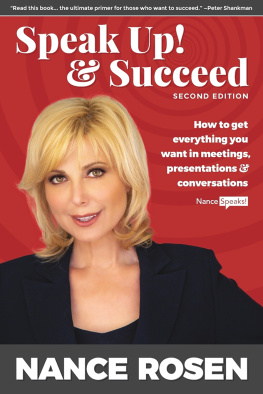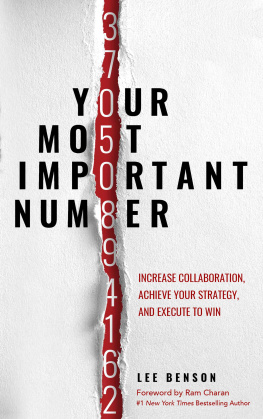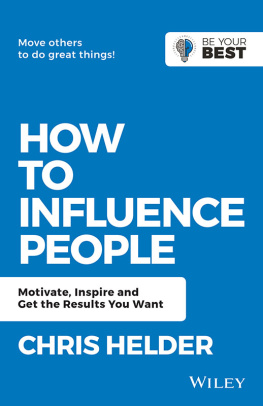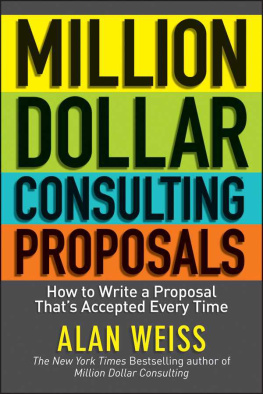
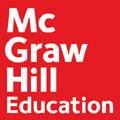
Copyright 2013 by Shawn Kent Hayashi. All rights reserved. Except as permitted under the United States Copyright Act of 1976, no part of this publication may be reproduced or distributed in any form or by any means, or stored in a database or retrieval system, without the prior written permission of the publisher.
ISBN: 978-0-07-180594-0
MHID: 0-07-180594-X
The material in this eBook also appears in the print version of this title: ISBN: 978-0-07-180593-3, MHID: 0-07-180593-1.
All trademarks are trademarks of their respective owners. Rather than put a trademark symbol after every occurrence of a trademarked name, we use names in an editorial fashion only, and to the benefit of the trademark owner, with no intention of infringement of the trademark. Where such designations appear in this book, they have been printed with initial caps.
McGraw-Hill Education eBooks are available at special quantity discounts to use as premiums and sales promotions, or for use in corporate training programs. To contact a representative, please e-mail us at bulksales@mcgraw-hill.com.
This publication is designed to provide accurate and authoritative information in regard to the subject matter covered. It is sold with the understanding that neither the author nor the publisher is engaged in rendering legal, accounting, or other professional service. If legal advice or other expert assistance is required, the services of a competent professional person should be sought.
From a Declaration of Principles Jointly Adopted by a Committee of the American Bar Association and a Committee of Publishers and Associations
TERMS OF USE
This is a copyrighted work and McGraw-Hill Education and its licensors reserve all rights in and to the work. Use of this work is subject to these terms. Except as permitted under the Copyright Act of 1976 and the right to store and retrieve one copy of the work, you may not decompile, disassemble, reverse engineer, reproduce, modify, create derivative works based upon, transmit, distribute, disseminate, sell, publish or sublicense the work or any part of it without McGraw-Hill Educations prior consent. You may use the work for your own noncommercial and personal use; any other use of the work is strictly prohibited. Your right to use the work may be terminated if you fail to comply with these terms.
THE WORK IS PROVIDED AS IS. McGRAW-HILL EDUCATION AND ITS LICENSORS MAKE NO GUARANTEES OR WARRANTIES AS TO THE ACCURACY, ADEQUACY OR COMPLETENESS OF OR RESULTS TO BE OBTAINED FROM USING THE WORK, INCLUDING ANY INFORMATION THAT CAN BE ACCESSED THROUGH THE WORK VIA HYPERLINK OR OTHERWISE, AND EXPRESSLY DISCLAIM ANY WARRANTY, EXPRESS OR IMPLIED, INCLUDING BUT NOT LIMITED TO IMPLIED WARRANTIES OF MERCHANTABILITY OR FITNESS FOR A PARTICULAR PURPOSE. McGraw-Hill Education and its licensors do not warrant or guarantee that the functions contained in the work will meet your requirements or that its operation will be uninterrupted or error free. Neither McGraw-Hill Education nor its licensors shall be liable to you or anyone else for any inaccuracy, error or omission, regardless of cause, in the work or for any damages resulting therefrom. McGraw-Hill Education has no responsibility for the content of any information accessed through the work. Under no circumstances shall McGraw-Hill Education and/or its licensors be liable for any indirect, incidental, special, punitive, consequential or similar damages that result from the use of or inability to use the work, even if any of them has been advised of the possibility of such damages. This limitation of liability shall apply to any claim or cause whatsoever whether such claim or cause arises in contract, tort or otherwise.
Dedicated to Jane Firth, who inspired me with her amazing listening ability. She role-models the best deep listening and inspires meaningful collaborations as a result.
Acknowledgments
Thank you to Angela Rice, William Hagan, Michelle Staas, Kate Early, Ann Strini, Dave Rees, Robert Andrucci, Caroline Nawrocki, and Bill Tyson for reading and rereading with me as this book evolved. Your fingerprints are all over this work.
On a project like this there are so many people behind the scenes whose names do not show up here. To all my clients and colleagues, thank you. Our conversations inspire me.
To the winners of the Star Developer Award and your commitment to developing future leaders in your organizations, you inspire collaboration in meaningful ways. Thank you.
To my colleagues, students, and friends at the Lehigh University MBA program, including Andrew Ward, Brandon Gallagher, and Mary Gulick, thank you for your support and the provocative conversations during our dinners and classes.
My respect and gratitude to all my friends who participate in the Business Banter Discussion group at Saucon Valley Country Club. A special mention to Sy and Sue Traub, Alan and Kathy Sterner, Joseph and Sara Perrotta, Michael and Heidi Schiffman, and Luis and Christine Alvarez. You are cherished friends.
Bob Diforio, Mary Glenn, and Casey Ebro, I am blessed to be able to collaborate with you again.
Elizabeth Jeffries, Anne-Mette Halvorson, Jane Firth, and Alan Weiss, you inspire me and continue to be cherished friends. Thank you for sharing your wisdom.
Jim Hayashi, thank you for everything you do to support me! I am deeply grateful for you.
Contents
PART I
THE FOUNDATION FOR SUCCESSFUL COLLABORATION
Leadership is often too focused on analysis and data, but today there is a greater need for: building trust, defining our purpose, appreciating contributions, and giving encouragement. These are the foundation for collaboration.
Stephen G. Hart, AVP Human Resources, Federal Reserve Bank of Philadelphia
Preface
Heidi Schiffman had a vision to run a for-profit, successful business that also raised money for schools. She launched this business in 1993. Fast-forward to today: Heidi is founder and President of KidStuff. As a wildly successful business, KidStuff has raised more than $40 million for education. Its business model is easy to understand: KidStuff provides a way for schools to raise money for classroom supplies, field trips, computers, sports equipment, and anything else they would like for students. The school earns 50 percent profit or more on every $25 KidStuff Coupon Book that is sold. When I asked Heidi what she believes is the key to KidStuffs success, she said, Collaboration. Everything we do is done in teams. We have the conversations we need to have to keep growing. We have high-performing teams within our organization, and we show schools how to create collaboration focused on a positive vision in their own communities. Heidi knows teams perform better than groups of individual contributors, and high-performing teams create a great organization.
Heidi realized she would not be able to bring her vision to life by herself. KidStuff became a success growing into 17 marketplaces because people were inspired to work together around a common goal to make a positive difference.
Have you ever wondered how someone like Heidi creates a successful company that makes a positive difference in the world? Would you like to know how people like this create communities of action that get amazing results? Im going to show you how to engage yourself, your team, your peers, and your manager to get results.
Next page

